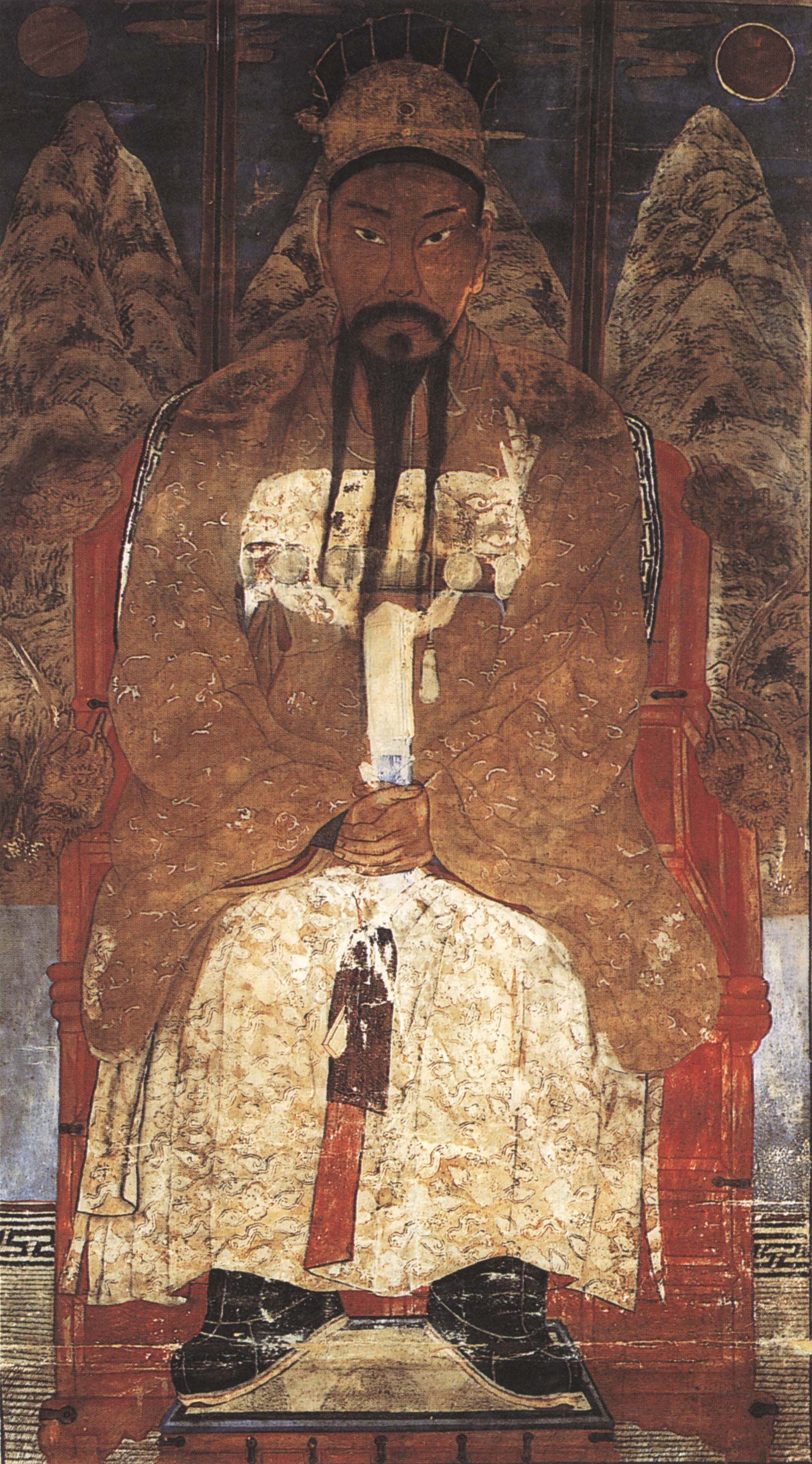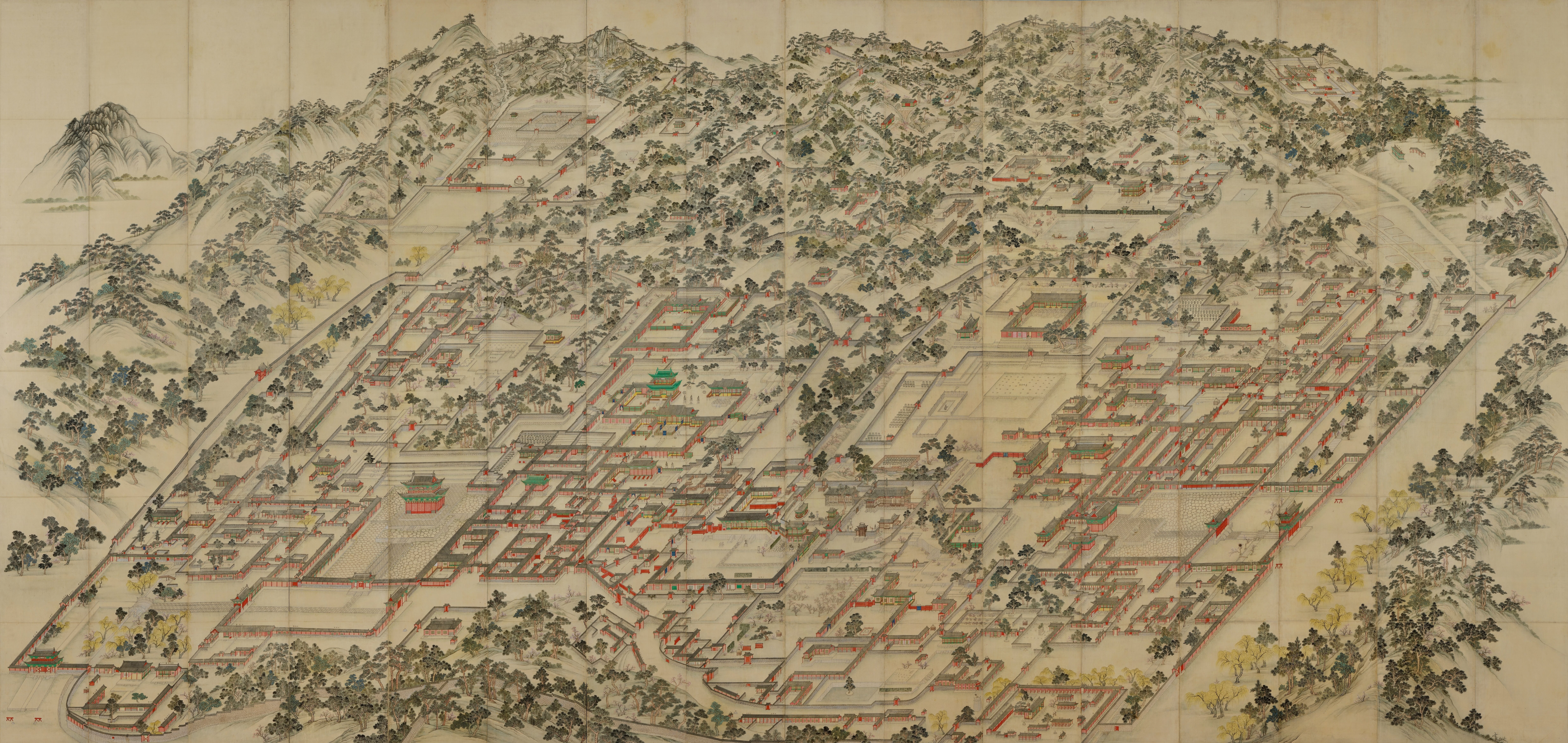|
Gwanghaegun Of Joseon
Gwanghae-gun or Prince Gwanghae (4 June 1575 – 7 August 1641), personal name Yi Hon (Hangul: 이혼, Hanja: 李琿), was the 15th ruler of the Joseon Dynasty of Korea. As he was deposed in a coup d'état, he did not receive a temple name. Biography Birth and background Gwanghaegun was the second son of King Seonjo, born to Lady Kim Gong-bin, a concubine. When Japan invaded Korea to attack the Ming Empire, he was installed as Crown Prince. When the king fled north to the border of Ming, he set up a branch court and fought defensive battles. During and after the Seven Year War (1592–1598), he acted as the de facto ruler of the Joseon Dynasty, commanding battles and taking care of the reconstruction of the nation after the devastating wars, in the place of old and weak King Seonjo. Although it brought prestige to him, his position was still unstable. He had an elder but incompetent brother Prince Imhae (Imhaegun, 임해군, 臨海君) and a younger but legitimate brother ... [...More Info...] [...Related Items...] OR: [Wikipedia] [Google] [Baidu] |
List Of Monarchs Of Korea
This is a list of monarchs of Korea, arranged by dynasty. Names are romanized according to the South Korean Revised Romanization of Korean. McCune–Reischauer romanizations may be found at the articles about the individual monarchs. Gojoseon Gojoseon (2333 BC – 108 BC) was the first Korean kingdom. According to legend, it was founded by Dangun in 2333 BC. Bronze Age archaeological evidence of Gojoseon culture is found in northern Korea and Liaoning. By the 9th to 4th century BC, various historical and archaeological evidence shows Gojoseon was a flourishing state and a self-declared kingdom. Both Dangun and Gija are believed to be mythological figures, but recent findings suggest and theorize that since Gojoseon was a kingdom with artifacts dating back to the 4th millennium BC, Dangun and Gija may have been royal or imperial titles used for the monarchs of Gojoseon, hence the use of Dangun for 1900 years. * :"An extreme manifestation of nationalism and the family cult was ... [...More Info...] [...Related Items...] OR: [Wikipedia] [Google] [Baidu] |
Korea
Korea ( ko, 한국, or , ) is a peninsular region in East Asia. Since 1945, it has been divided at or near the 38th parallel, with North Korea (Democratic People's Republic of Korea) comprising its northern half and South Korea (Republic of Korea) comprising its southern half. Korea consists of the Korean Peninsula, Jeju Island, and several minor islands near the peninsula. The peninsula is bordered by China to the northwest and Russia to the northeast. It is separated from Japan to the east by the Korea Strait and the Sea of Japan (East Sea). During the first half of the 1st millennium, Korea was divided between three states, Goguryeo, Baekje, and Silla, together known as the Three Kingdoms of Korea. In the second half of the 1st millennium, Silla defeated and conquered Baekje and Goguryeo, leading to the " Unified Silla" period. Meanwhile, Balhae formed in the north, superseding former Goguryeo. Unified Silla eventually collapsed into three separate states due ... [...More Info...] [...Related Items...] OR: [Wikipedia] [Google] [Baidu] |
Hopae
''Hopae'' were identification tags carried by Koreans during the Joseon dynasty, recording the bearer's name, place of birth, status and residence.Grayson 2002: 108 The tags consists of the persons name, birthdate, and where they were born. The ''hopae'' system helped the government in tax collection and retrieving runaway slaves. History The ''hopae'' system was initiated by King Taejong in 1413, apparently on the basis of a similar practice by the Yuan dynasty in China.Duncan: 212 Taejong declared that ''hopae'' must be carried by all males aged 16 and older. The desire to control migration was cited as a major reason behind the system in the edict which established the ''hopae'' law. However, it was abandoned only three years later in 1416, after the completion of the new household registry; this may have been because the ''hopae'' were no longer necessary after the completion of the registry, or the opposition which commoners demonstrated to the requirement of carrying ''h ... [...More Info...] [...Related Items...] OR: [Wikipedia] [Google] [Baidu] |
Changdeokgung
Changdeokgung (Hangul: 창덕궁, Hanja: 昌德宮; literally, "The Palace of Prospering Virtue"), also known as Changdeokgung Palace or Changdeok Palace, is set within a large park in Jongno District, Seoul, South Korea. It is one of the " Five Grand Palaces" built by the kings of the Joseon dynasty (1392–1897). As it is located east of Gyeongbok Palace, Changdeokgung—along with Changgyeonggung—is also referred to as the "East Palace" (동궐, 東闕, ''Donggwol''). Changdeokgung was the most favored palace of many Joseon kings and retained many elements dating from the Three Kingdoms of Korea period that were not incorporated in the more contemporary Gyeongbokgung. One such element is the fact that the buildings of Changdeokgung blend with the natural topography of the site instead of imposing themselves upon it. Like the other Five Grand Palaces in Seoul, it was heavily damaged during the Japanese occupation of Korea (1910–1945). Currently, only about 30% of the pre- ... [...More Info...] [...Related Items...] OR: [Wikipedia] [Google] [Baidu] |
Kim Jenam
Kim or KIM may refer to: Names * Kim (given name) * Kim (surname) ** Kim (Korean surname) *** Kim family (other), several dynasties **** Kim family (North Korea), the rulers of North Korea since Kim Il-sung in 1948 ** Kim, Vietnamese form of Jin (Chinese surname) Languages * Kim language, a language of Chad * Kim language (Sierra Leone), a language of Sierra Leone * kim, the ISO 639 code of the Tofa language of Russia Media * ''Kim'' (album), a 2009 album by Kim Fransson * "Kim" (song), 2000 song by Eminem * "Kim", a song by Tkay Maidza, 2021 * ''Kim'' (novel), by Rudyard Kipling ** ''Kim'' (1950 film), an American adventure film based on the novel ** ''Kim'' (1984 film), a British film based on the novel * "Kim" (''M*A*S*H''), a 1973 episode of the American television show ''M*A*S*H'' * ''Kim'' (magazine), defunct Turkish women's magazine (1992–1999) Organizations * Kenya Independence Movement, a defunct political party in Kenya * Khalifa Islamiyah M ... [...More Info...] [...Related Items...] OR: [Wikipedia] [Google] [Baidu] |


